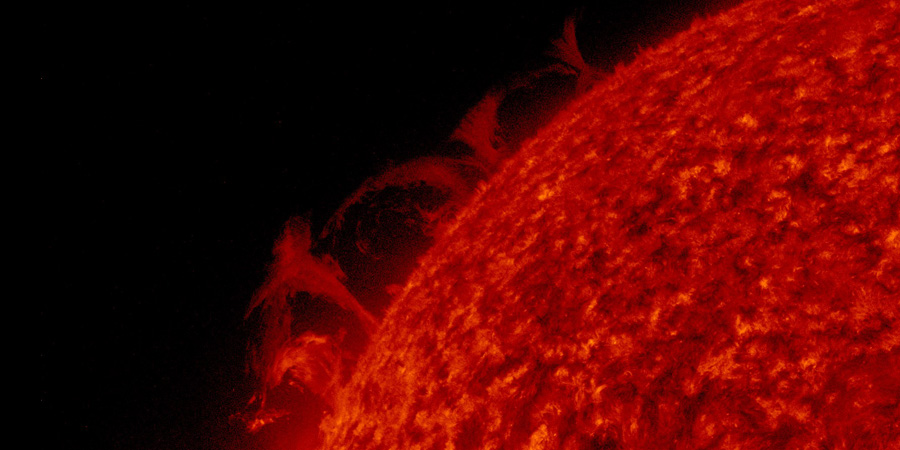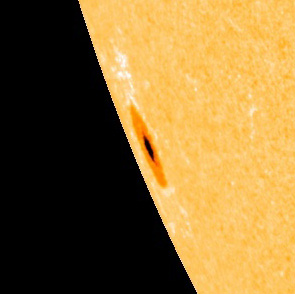Quiet conditions
Tuesday, 7 October 2014 14:46 UTC

All is calm on our nearest star and the same can be said about the geomagnetic conditions here at Earth. The M7.3 solar flare that occurred on 2 October was the last event really worth mentioning on the Sun. Also at Earth we are seeing nothing but quiet geomagnetic conditions. We have seen no geomagnetic instability for over three days now: the Kp-index has not been above Kp3 since the coronal hole streams passed Earth.
The sad thing is that it also does not look like we will see any change the coming days. The most exciting event of the past 24 hours was a filament eruption yesterday combined with an C3 solar flare near the south-east limb that launched a non-earth-directed coronal mass ejection. The sunspot regions currently on the earth-facing solar disk are also in decay or just plain unremarkable. The chance that we will see an M-class solar flare in the coming 3 days is very low.
One thing to note is that there is a new sunspot group (image below) coming around the east limb right now but it looks to be a simple Alpha group that consists of only one sunspot. It however seems quiet and there are no strong solar flares expected from it. We will of course continue to monitor this sunspot region as it rotates into view.

Geomagnetic conditions
Other than that we expect quiet geomagnetic conditions on Earth as well for the coming days as there are no coronal mass ejections on the sun-earth line and there have also not been any coronal holes in geoeffective position. Quiet (Kp2 or less) conditions seem are expected for the next 3 days.
Header image: solar prominence currently near the northeast limb as seen by NASA SDO.
Sunspot image: NASA SDO/HMI.
Thank you for reading this article! Did you have any trouble with the technical terms used in this article? Our help section is the place to be where you can find in-depth articles, a FAQ and a list with common abbreviations. Still puzzled? Just post on our forum where we will help you the best we can!
Latest news
Latest forum messages
Support SpaceWeatherLive.com!
A lot of people come to SpaceWeatherLive to follow the Sun's activity or if there is aurora to be seen, but with more traffic comes higher server costs. Consider a donation if you enjoy SpaceWeatherLive so we can keep the website online!

Space weather facts
| Last X-flare | 2025/01/04 | X1.85 |
| Last M-flare | 2025/01/22 | M1.3 |
| Last geomagnetic storm | 2025/01/04 | Kp5 (G1) |
| Spotless days | |
|---|---|
| Last spotless day | 2022/06/08 |
| Monthly mean Sunspot Number | |
|---|---|
| December 2024 | 154.5 +2 |
| January 2025 | 145.8 -8.7 |
| Last 30 days | 159.9 +39.2 |


